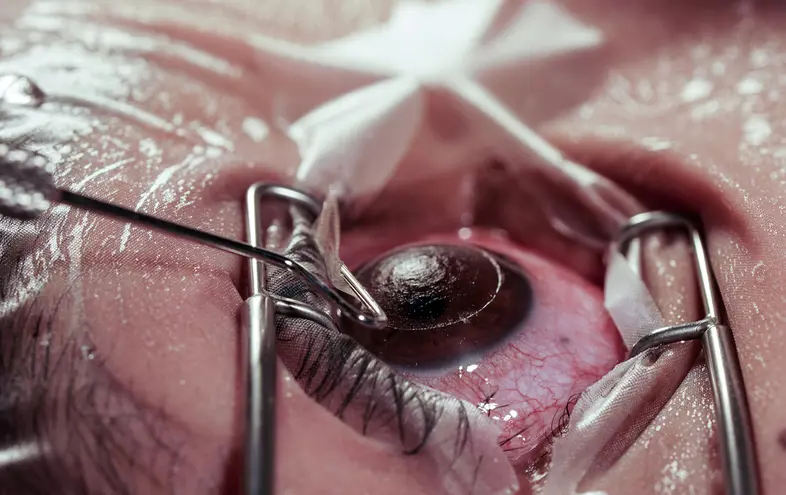NDP EyeCare | Dr. N D Patil | Dr. Gaurav Patil | Cataract | Glaucoma | Oculoplasty | LASIK
Our Latest Equipment is Best to keep your Vision perfect like Eagle!

What Is Laser Eye Surgery?
Laser eye surgery refers to a set of procedures that reshape the cornea (the clear front surface of the eye) to correct refractive errors (nearsightedness, farsightedness, astigmatism). The goal is to reduce dependency on glasses or contact lenses and in many cases eliminate them entirely.
Common techniques include:
LASIK (Laser-Assisted In Situ Keratomileusis)
PRK (Photorefractive Keratectomy)
LASEK (Laser Epithelial Keratomileusis)
SMILE (Small Incision Lenticule Extraction)
Each technique uses a precise excimer or femtosecond laser to remove microscopic amounts of tissue from the cornea to adjust its focusing ability.
Laser Eye Surgery in Nagpur – Clear Vision with Dr. N. D. Patil
Benefits of Laser Eye Surgery
Choosing laser eye surgery offers several significant advantages:
Reduced Dependence on Glasses/Contacts
Many patients achieve vision close to 20/20 and rarely need glasses for everyday tasks.Rapid Improvement of Vision
In many cases vision begins to improve within hours or by the next day after surgery.Long-Term Stability
Once healing stabilizes, the effect tends to last many years and sometimes a lifetime depending on eye health.Better Quality of Life
Activities like driving, sports, swimming, or travel become more convenient without glasses slipping, fogging, or needing cleaning.Precision and Safety
Modern lasers deliver exceptional precision. When done by a skilled surgeon using proper preoperative screening, risks are low.
Is Laser Eye Surgery Right for You?
Not everyone is a candidate. Key factors include:
Age: Usually 18 or older (often >21)
Stable Vision: Prescription should not have changed significantly in the past year
Corneal Thickness: Sufficient tissue is needed for reshaping
Healthy Eyes: No active infections, severe dry eye, uncontrolled glaucoma, or corneal diseases
Realistic Expectations: Understanding benefits and limitations
A comprehensive preoperative evaluation by the surgeon determines eligibility. That evaluation includes corneal mapping, topography, pachymetry (measuring thickness), tear film tests, refraction, and eye health screen.
Preoperative Evaluation and Planning
Before surgery, Dr. Patil’s team conducts a thorough evaluation:
Detailed Discussion
The patient’s medical history, expectations, lifestyle, and eye habits are discussed.Refractive Assessment
Measurement of glasses prescription, astigmatism, spherical errors.Corneal Topography & Tomography
Mapping the cornea surface to detect irregularities that could contraindicate laser corneal surgery.Pachymetry (Corneal Thickness Measurement)
Ensures there is enough corneal tissue to safely reshape.Tear Film and Dry Eye Assessment
To detect and treat dry eye before surgery.Pupil Size Measurement
Important for night vision considerations.Ocular Health Checks
For glaucoma, retinal health, cataract, or other eye conditions.
Based on all data, the surgeon decides which laser technique is most appropriate and customizes the flap depth or ablation profile.
Laser Eye Surgery Techniques Explained
LASIK
A thin flap is created in the cornea using a femtosecond laser.
The flap is lifted; an excimer laser removes tissue beneath to reshape.
The flap is repositioned and heals on its own.
Advantages: quick visual recovery, minimal discomfort.
PRK / LASEK
The outer epithelial layer is removed (manually or by alcohol solution).
Excimer laser ablates the cornea surface.
The epithelium regenerates over days.
Advantages: for thinner corneas; no flap risk. Recovery is slower.
SMILE
A small lenticule (lens-shaped piece of tissue) is created within the cornea using a femtosecond laser.
A small incision is made, and the lenticule is removed.
This alters cornea shape.
Advantages: minimal disturbance to corneal structure, fewer dry eye issues.
Dr. Patil assesses and chooses the optimal method for each patient depending on their eye measurements and lifestyle.
What Happens on the Day of Surgery?
The procedure is typically outpatient. Sequence:
Arrival and administrative formalities
Eye cleaning and antibiotic drops
Anesthetic (numbing) eye drops
Positioning under the laser
Flap creation (for LASIK) or epithelial removal (for PRK)
Laser ablation according to the treatment plan
Flap repositioning or wound covering
Observation for a short period
Instruction for immediate care
The entire process usually takes 15 to 30 minutes per eye though the laser ablation itself is just a few seconds to minutes depending on the correction required.
Risks, Complications, and How They Are Managed
While laser eye surgery is generally safe, there are potential risks. It is important to understand them:
Undercorrection or overcorrection (residual refractive error)
Dry eyes or transient worsening of dryness
Glare, haloes, or difficulty with night vision
Flap complications (in LASIK)
Infection or inflammation
Regression (some return of refractive error over years)
Corneal ectasia (very rare thinning problem)
Dr. Patil’s clinic emphasizes stringent safety protocols: sterile environment, preoperative preparation, careful laser calibration, postoperative monitoring, and readiness to manage complications. Many issues can be managed medically or with enhancement procedures if needed.
Recovery and Postoperative Care
Recovery depends on the procedure used:
Immediately after surgery
Mild discomfort or foreign-body sensation, watery eyes, light sensitivity.First 24–48 hours
Vision begins improving (especially in LASIK), though fluctuations are common.First week
Most patients return to routine work (light tasks). Eye rubbing must be avoided.First month
Follow-up visits at day 1, day 3, day 7, one month. Eyes continue stabilizing.Longer term
Final vision settles in 3 to 6 months. Occasional enhancements may be needed.
Postoperative instructions include antibiotic and anti-inflammatory eye drops, avoidance of swimming or dusty environments for a time, protective eyewear while sleeping, frequent follow-ups and reporting any sudden pain or vision loss.
Book an Appointment Today
If you are searching for the best glaucoma specialist in Nagpur, look no further than Dr. N.D. Patil at the Centre of Advanced Eye Care. Early intervention is the key to preserving your sight. So, don’t wait until it’s too late—schedule your consultation today and take the first step toward protecting your vision.

